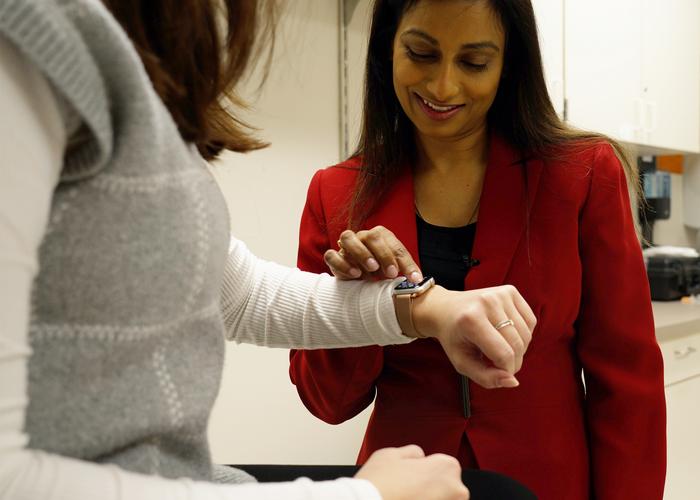In recent years, technological advancements have ushered in a new era of self-monitoring health devices, particularly in the field of cardiology. With an increase in the availability and sophistication of these devices, individuals have more tools at their disposal to monitor their heart health than ever before. This paradigm shift has the potential to empower patients and substantially improve clinical outcomes. However, a national survey conducted by The Ohio State University Wexner Medical Center has revealed a disconcerting trend: while a significant percentage of Americans regularly use these devices, a surprisingly small number actually share the collected data with their healthcare providers.
The survey of 1,008 Americans found that nearly two-thirds utilize some form of device to keep tabs on their cardiovascular wellbeing. The most commonly used devices include smartwatches, portable blood pressure monitors, fitness applications, and wearable fitness trackers. Interestingly, a mere 25% of these users leverage their device data in discussions with their doctors. This poses a critical question: why are patients not sharing this readily available information with their healthcare providers? This lack of communication could undermine the potential benefits of these devices, which are designed to facilitate early detection and proactive management of heart-related issues.
Dr. Laxmi Mehta, the director of Preventative Cardiology at The Ohio State University Wexner Medical Center, emphasizes the importance of patient engagement in their own health monitoring. According to Mehta, self-monitoring devices serve as invaluable tools for both patients and healthcare providers. For instance, if a patient notices persistent changes in their blood pressure, it may prompt them to seek medical advice sooner than they would during routine check-ups. Moreover, irregular heart rhythms, such as atrial fibrillation, can be identified early through these devices, significantly improving patient care.
Many patients, including 78-year-old Sue VanWassenhove, are increasingly inquiring about the advantages and disadvantages of these health monitors. After experiencing falls, VanWassenhove’s children gifted her a smartwatch to help track her health metrics. Living with sleep apnea, which affects her heart rate, she pays close attention to the data her device provides. When her smartwatch indicated a concerning pattern of heart rate abnormalities, she reached out to Dr. Mehta for further evaluation. This scenario highlights the vital role that personal monitoring can play in motivating individuals to take charge of their health.
In conjunction with a patient’s regular health routine, incorporating physical exercise is essential for cardiovascular health. Mehta notes that a simple formula to estimate an individual’s maximum heart rate is to subtract their age from 220. During moderate-intensity workouts, aiming for 50-75% of this maximum heart rate is recommended, while for vigorous activities, the target is 70-85%. Aligning exercise with these parameters is vital for maintaining an active and healthy heart.
While the advantages of self-monitoring devices are undeniable, the onus falls on both patients and physicians to enhance their collaboration in health management. Doctors need to encourage open dialogue regarding digital health records accumulated by personal devices, thereby prompting patients to share crucial information. By doing so, patients can play an active role in their health journey, using their health data affectionately and responsibly.
Moreover, healthcare providers should be educated about the functionalities of these devices to better understand how to integrate them into patient care plans effectively. Increased awareness among professionals will empower them to advise patients better on how to utilize their health data proactively. This sharing of information can ultimately lead to early interventions that not only save lives but significantly improve quality of life for those grappling with chronic health conditions.
Equally important is the need for healthcare systems to adapt to this new reality. Integrating self-monitoring data into electronic health record systems can streamline the process for healthcare providers, thereby enriching patient care. As digital health continues to evolve, the healthcare system must embrace these changes, ensuring that both patients and professionals can benefit from the technology available at their fingertips.
As we move forward, the convergence of technology in healthcare presents a wealth of possibilities. The patient’s perspective is gradually evolving toward an empowered model where individuals take responsibility for their health through various monitoring devices. However, the responsibility of healthcare providers remains to ensure that these empowered patients have the necessary support and guidance to use their devices effectively, ensuring that the information collected leads to actionable health decisions and improved patient outcomes.
The survey conducted by The Ohio State University Wexner Medical Center illuminates a crucial need in today’s healthcare landscape. Bridging the gap between patient data collection and the clinical insights that arise from it is imperative for enhancing cardiovascular health management. The synergy of technology, patient engagement, and healthcare provider collaboration will dictate the future of heart health monitoring and management.
This pivotal moment in health technology serves as a reminder that while innovation creates opportunities, open communication and understanding remain essential to translating that innovation into tangible health benefits. Engaging patients in their health journey can foster a culture in which proactive measures are taken, ultimately leading to healthier populations and a more efficient healthcare system.
—
Subject of Research: Heart Health Monitoring
Article Title: Bridging the Gap: Empowering Heart Health Through Technology
News Publication Date: January 22, 2024
Web References: N/A
References: N/A
Image Credits: The Ohio State University Wexner Medical Center
Keywords: Heart Health, Self-Monitoring Devices, Patient Engagement, Technology in Healthcare, Cardiovascular Health.
Tags: cardiovascular researchchronic disease managementclinical data integrationdigital health integrationECG monitoringhealth tech adoptionhealth technology disconnectheart health monitoringpatient empowermentpatient-provider communicationpreventative cardiologywearable technology





